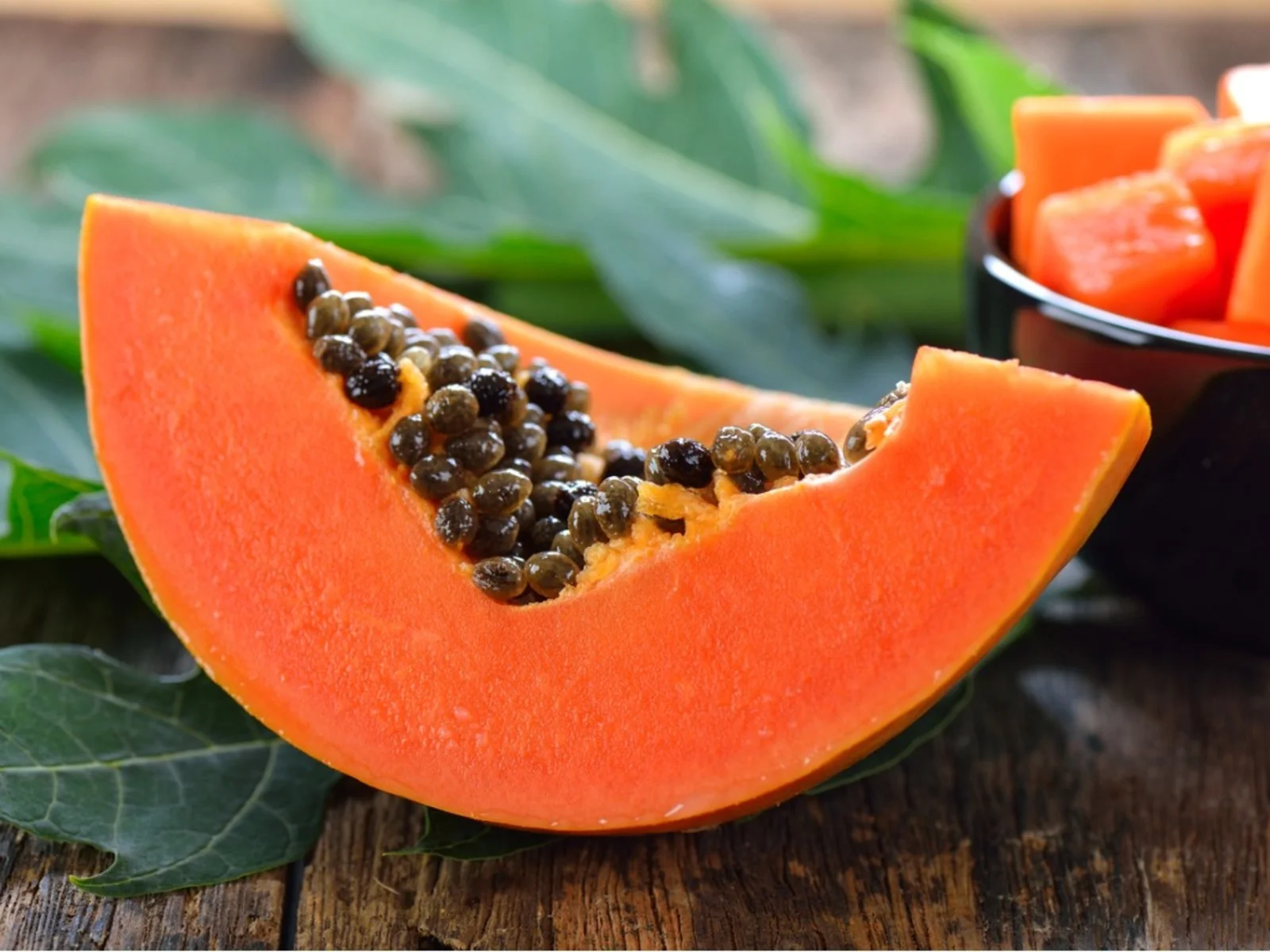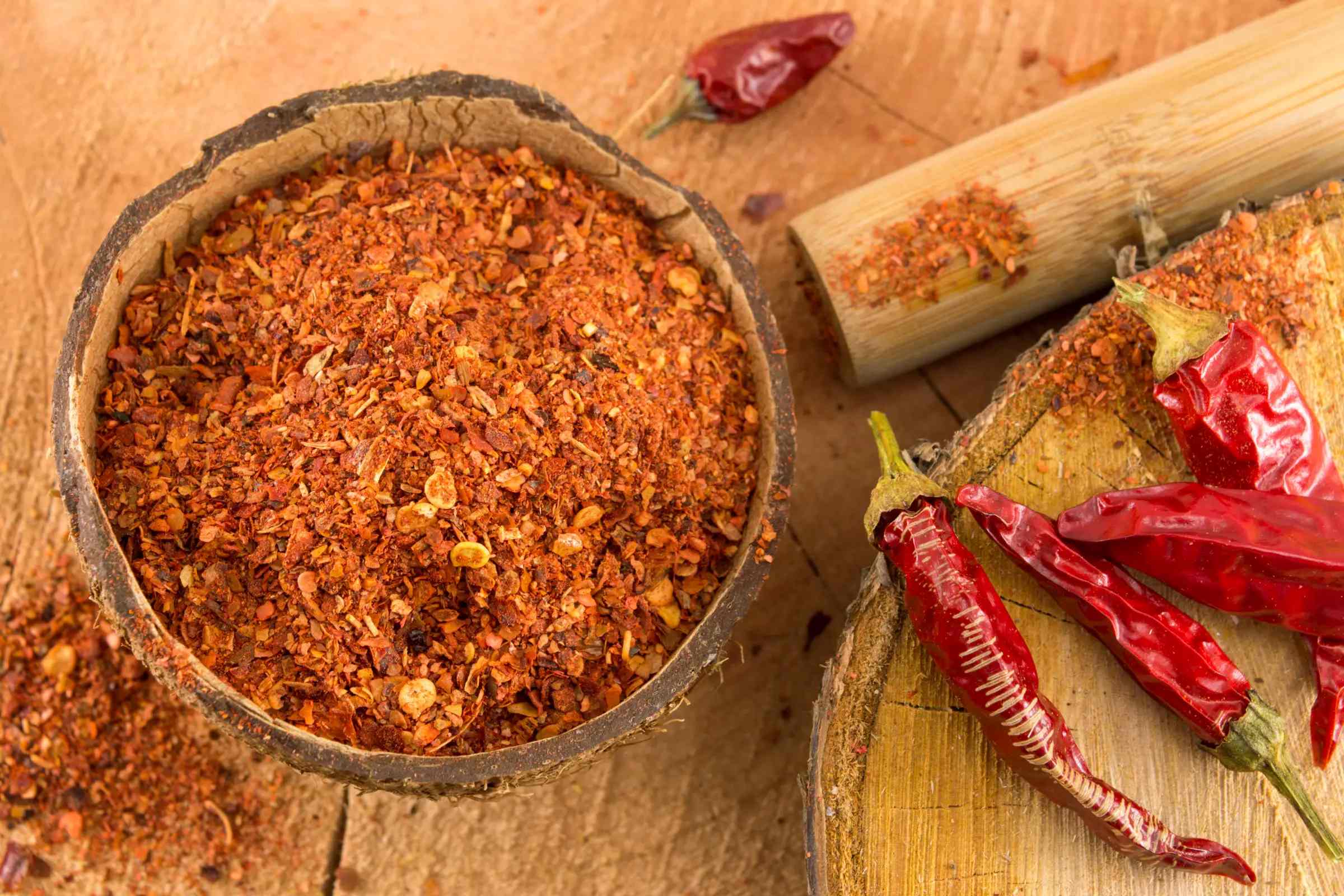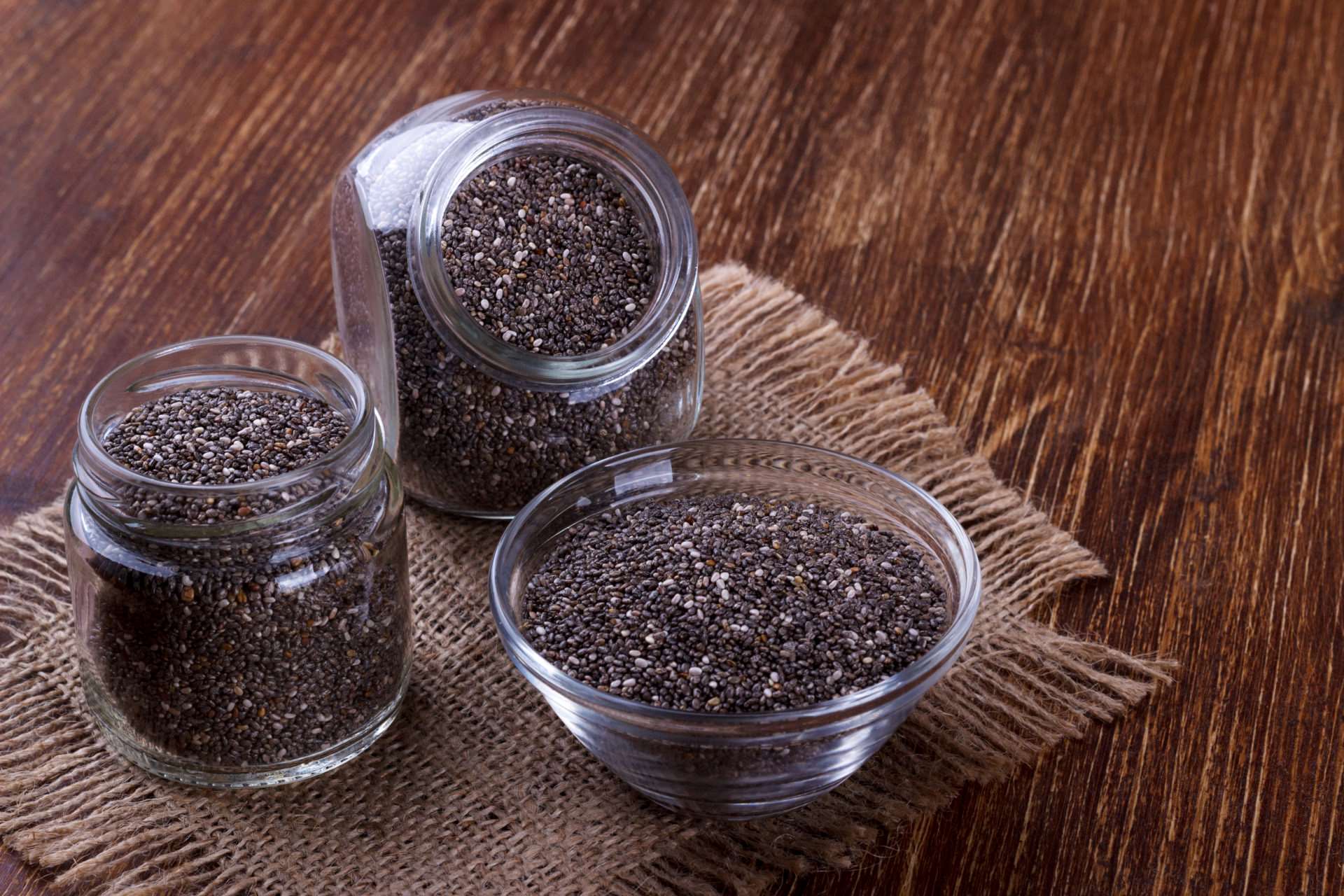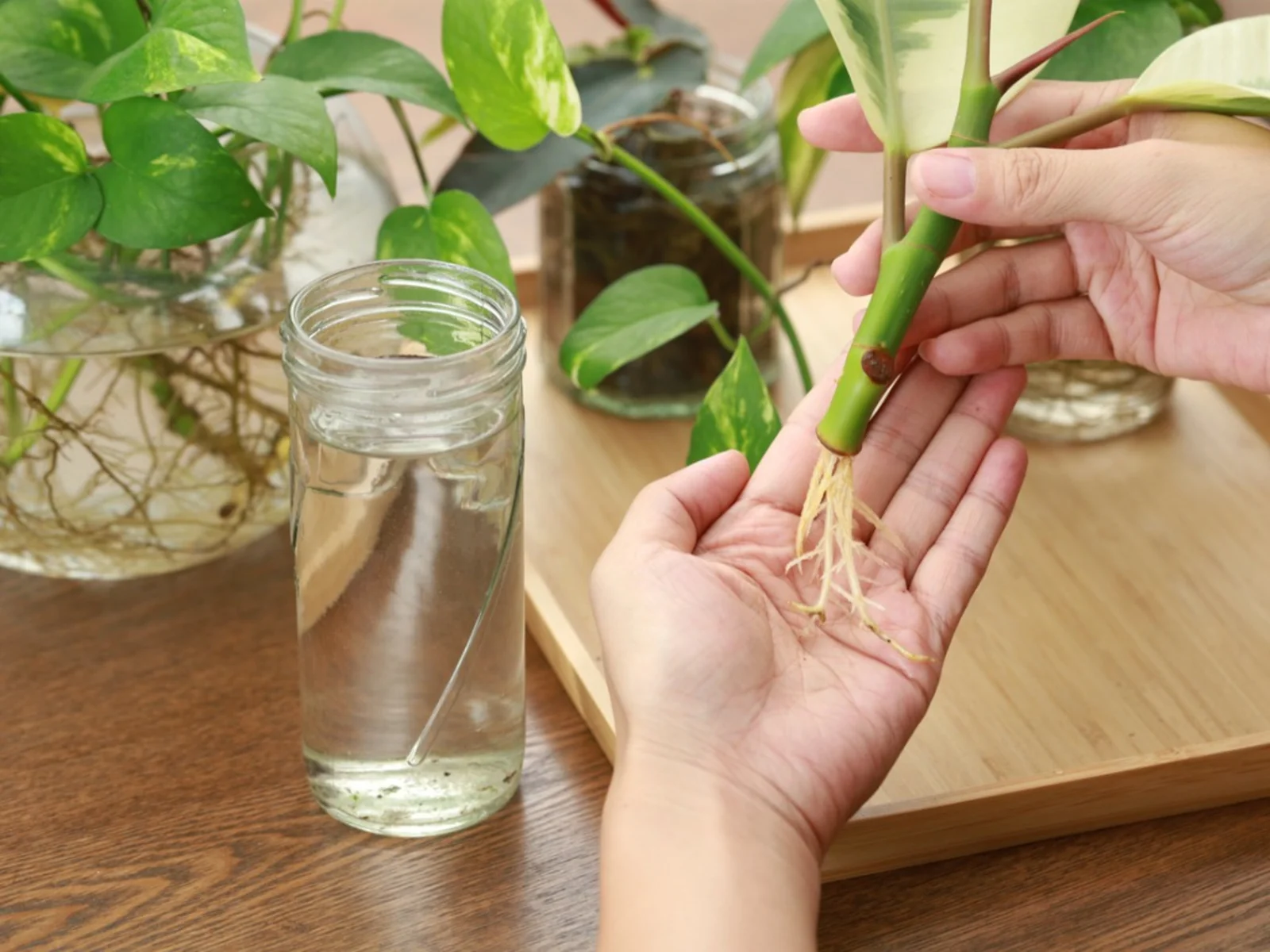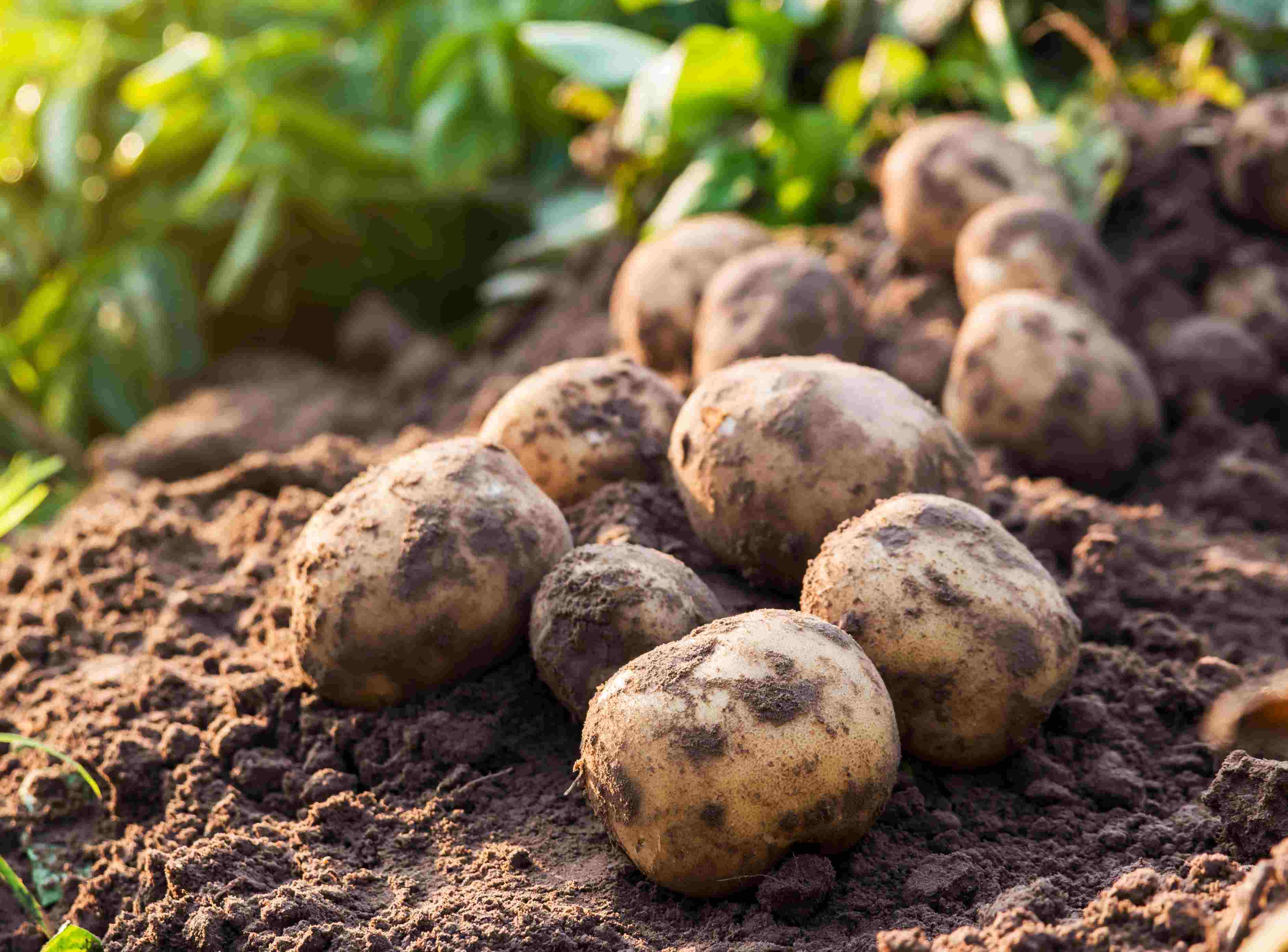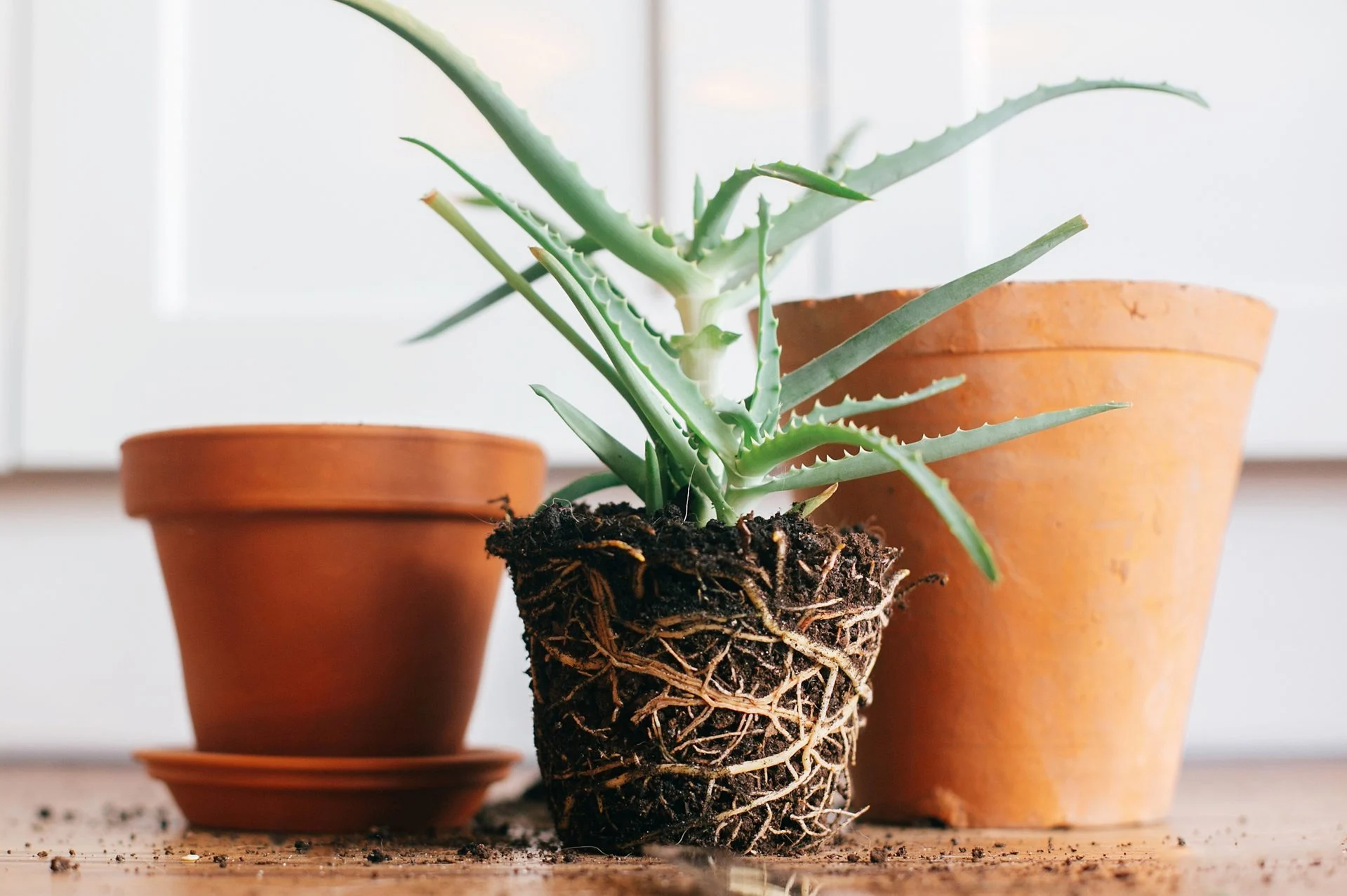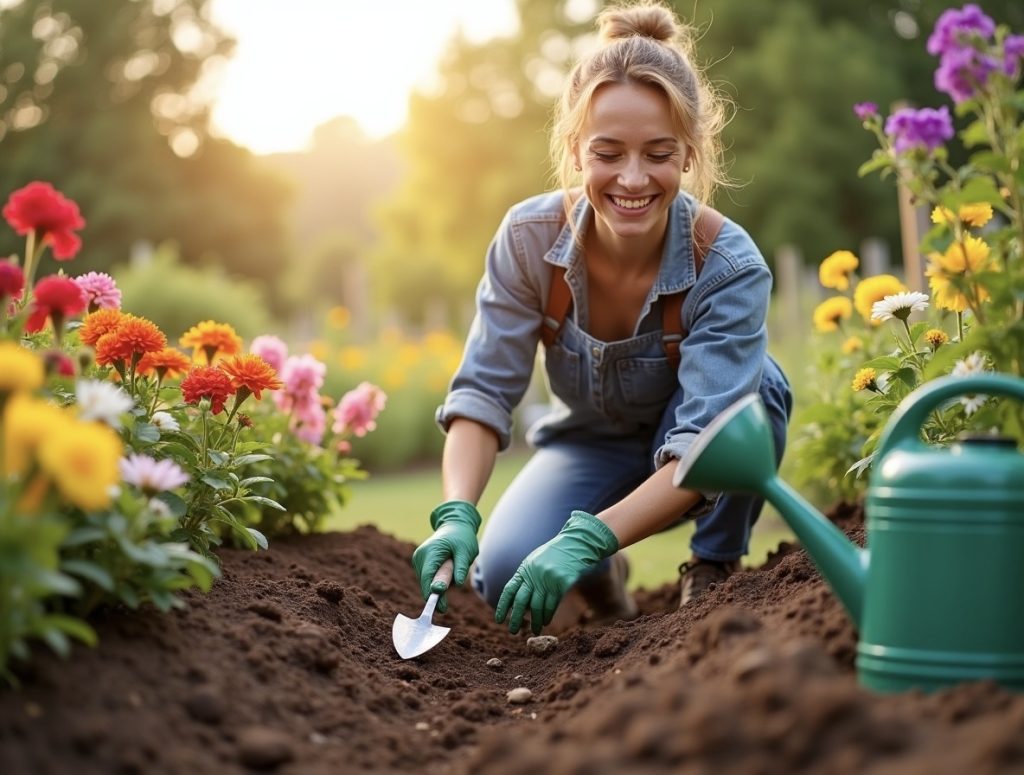Home>Types of Gardening>Ornamental Gardening>How Long To Soak Seeds Before Planting


Ornamental Gardening
How Long To Soak Seeds Before Planting
Modified: January 22, 2024
Learn the perfect timing for soaking seeds before planting in your ornamental gardening projects and boost your chances of successful germination.
(Many of the links in this article redirect to a specific reviewed product. Your purchase of these products through affiliate links helps to generate commission for Chicagolandgardening.com, at no extra cost. Learn more)
Table of Contents
Introduction
Welcome to the world of ornamental gardening! Whether you’re a gardening enthusiast or a beginner, one of the most crucial steps in growing beautiful plants is ensuring proper germination of seeds. While there are various techniques to promote seed germination, one method that is gaining popularity is soaking seeds before planting.
Soaking seeds involves immersing them in water for a specific period of time before sowing them in the soil. This simple yet effective technique offers numerous benefits for your plants’ growth and development. By allowing seeds to absorb water prior to planting, you are jump-starting the germination process and increasing the chances of successful sprouting.
While the concept of soaking seeds may seem simple, it is important to understand the factors that can affect the soaking time for different types of seeds. Factors such as seed size, hardness, and natural dormancy mechanisms can influence the duration of soaking needed. By knowing how long to soak each type of seed, you can optimize the germination process and ensure healthy growth for your ornamental plants.
In this article, we will delve deeper into the importance of soaking seeds, the various factors that can affect soaking time, and the specific soaking times for common types of ornamental plant seeds. We will also provide a step-by-step guide on how to properly soak seeds and share some valuable tips and precautions to ensure optimal results. Additionally, we will explore alternative techniques you can use to enhance seed germination.
So, get ready to dive into the world of seed soaking and discover how this simple practice can transform your ornamental gardening journey. Let’s explore the wonders of seed germination and unlock the potential of your precious seeds!
Importance of Soaking Seeds
Soaking seeds before planting plays a significant role in the successful germination and subsequent growth of ornamental plants. This practice offers several key benefits that can greatly enhance the overall health and vigor of your plants.
One of the primary advantages of soaking seeds is the improvement in germination rates. By exposing the seeds to water before planting, you are effectively initiating the hydration process. This helps to soften the seed coat, allowing moisture to penetrate the seed more easily. As a result, the seeds are activated and primed for germination, leading to higher success rates and faster sprouting.
Furthermore, soaking seeds can help break seed dormancy. Some seeds, especially those of certain plant species, have built-in dormancy mechanisms that inhibit germination until specific conditions are met. The process of soaking can simulate the natural environmental cues that trigger seed dormancy release, such as exposure to moisture. By providing the necessary hydration through soaking, you can overcome seed dormancy and promote germination even in challenging conditions.
The soaking process also aids in nutrient absorption. During soaking, the seeds absorb water, along with any dissolved nutrients present in the soaking solution. This nutrient uptake provides the young seedlings with a head start in terms of obtaining essential elements for growth and development. It ensures that the plants have a sufficient supply of nutrients from the very beginning, setting a solid foundation for healthy and vigorous growth.
Another advantage of soaking seeds is the ability to identify and discard non-viable seeds. Some seeds may be duds and incapable of germinating. By soaking seeds before planting, you can observe which ones swell and show signs of vitality. This allows you to separate the viable seeds from the non-viable ones, saving you time, effort, and resources by only planting seeds with a higher chance of successful germination.
Overall, soaking seeds before planting is a simple yet powerful technique that provides numerous benefits. From improving germination rates to breaking seed dormancy and facilitating nutrient absorption, this practice sets the stage for healthy growth and beautiful ornamental plants. It is a time-tested method that can significantly increase your chances of success in the world of ornamental gardening.
Factors Affecting Soaking Time
The soaking time for seeds can vary depending on several factors. Understanding these factors is crucial to determine the optimal duration for soaking different types of ornamental plant seeds.
One of the primary factors that affects soaking time is the size of the seeds. Generally, smaller seeds require less soaking time compared to larger seeds. This is because smaller seeds have a thinner seed coat, allowing water to penetrate more easily and hydrate the embryo within. On the other hand, larger seeds with thicker seed coats may require a longer soaking period to fully absorb moisture and initiate germination.
The hardness of the seed coat is another important factor to consider. Some seeds have extremely hard and impermeable coatings that act as a protective barrier against moisture. These hard-coated seeds may require longer soaking times to soften the seed coat and break down the barrier. Scarification, which involves mechanically scratching or nicking the seed coat, can also be done prior to soaking to promote water absorption.
In addition to seed size and hardness, natural dormancy mechanisms can influence the soaking time. Some seeds have built-in dormancy that prevents immediate germination. These dormancy mechanisms can be caused by factors such as low moisture levels, temperature fluctuations, or the presence of certain chemicals. Soaking seeds helps to overcome these dormancy barriers by mimicking the natural environmental conditions required to break dormancy.
The specific requirements of different plant species should also be taken into account when determining the soaking time. Each type of ornamental plant has its unique characteristics and germination needs. Some seeds may require a longer soaking period, while others may benefit from shorter soak times. It’s important to research and understand the specific requirements of the plant species you are working with to ensure optimal soaking conditions.
Lastly, environmental factors, such as temperature and humidity, can influence the soaking time. Warmer temperatures generally accelerate the absorption of water by seeds, while colder temperatures may slow down the process. Consulting seed catalogs, gardening references, or seeking advice from experienced gardeners can provide valuable insights into the ideal temperature and humidity conditions for seed soaking.
By considering these factors, you can determine the appropriate soaking time for different types of ornamental plant seeds. Adjusting the soaking duration based on seed size, hardness, dormancy mechanisms, and specific plant requirements will help maximize the chances of successful germination and ensure healthy growth of your ornamental plants.
Common Types of Seeds and Their Soaking Times
Different types of seeds have varying soaking times to achieve optimal germination. Understanding the specific requirements of each seed can help you determine the appropriate duration for soaking. Here are some common types of ornamental plant seeds and their recommended soaking times:
- Annual Flower Seeds: Annual flowers such as marigolds, petunias, and zinnias generally benefit from soaking for 12 to 24 hours. This allows for sufficient hydration and softening of the seed coat, promoting quicker germination.
- Perennial Flower Seeds: Perennial flower seeds, including black-eyed susans, coneflowers, and lupines, often require a longer soaking period. Soaking them for 24 to 48 hours can help break down their tough seed coats and enhance germination rates.
- Vegetable Seeds: Vegetable seeds such as beans, peas, and cucumbers can greatly benefit from soaking for 12 to 24 hours. This helps to speed up germination and ensures a stronger start for seedlings.
- Tree and Shrub Seeds: Tree and shrub seeds, like maple, oak, and lilac, often have hard seed coats that require scarification and extended soaking periods. Soaking them for 48 to 72 hours or even longer can help soften the seed coat and improve germination rates.
- Herb Seeds: Many herb seeds, including basil, parsley, and thyme, have small sizes and relatively thin seed coats. Soaking them for 6 to 12 hours is usually sufficient to trigger germination and promote healthy seedling growth.
- Grass Seeds: Grass seeds, such as Bermuda grass and Kentucky bluegrass, generally do not require soaking before planting. However, a pre-germination technique called stratification can be employed by keeping the seeds moist in a cool environment for a specific duration to enhance germination.
It is important to note that these soaking times are general guidelines and can vary based on factors like seed quality, environmental conditions, and individual seed characteristics. Always refer to seed packets, online resources, or consult with experienced gardeners to get specific recommendations for the seeds you are working with.
By following the recommended soaking times for different types of seeds, you can provide the ideal conditions for germination, resulting in healthy and robust ornamental plants.
Step-by-Step Guide to Soaking Seeds
Soaking seeds before planting is a fairly simple process that can greatly improve germination rates and promote healthy plant growth. Here is a step-by-step guide to help you soak your ornamental plant seeds effectively:
- Select the Seeds: Choose the seeds you wish to soak. Consider the specific soaking requirements for each type of seed.
- Gather Materials: Gather the necessary materials, including a clean container, distilled water, and the seeds you want to soak.
- Clean the Container: Ensure the container you use for soaking is clean and free from any residue or contaminants that could affect the seeds’ hydration.
- Measure the Seeds: Measure the desired amount of seeds you want to soak. Follow the recommended seed quantity suggested on the seed packet or reference material.
- Fill the Container: Fill the container with distilled water to a level that will fully submerge the seeds. The water should be at room temperature or slightly warm.
- Add the Seeds: Gently place the seeds into the water, ensuring they are fully immersed. Depending on the seed type, you may need to adjust the soak time as per the previous section’s recommendations.
- Set the Timer: Set a timer based on the suggested soaking time for the specific type of seed you are working with.
- Monitor the Soaking Process: Keep an eye on the seeds during their soaking time. You may notice seeds beginning to swell or absorb water as they become hydrated.
- Drain and Rinse the Seeds: Once the soaking time is complete, carefully drain the water from the container. Give the seeds a gentle rinse with fresh water to remove any residue.
- Plant the Seeds: After soaking, plant the seeds according to the recommended planting depth and spacing requirements for the specific type of seed.
- Monitor Germination: Keep track of the germination progress. Proper watering, adequate sunlight, and suitable growing conditions will support healthy seedling development.
Following these steps will ensure that your ornamental plant seeds receive the hydration they need to kickstart the germination process. Remember to adjust the soaking time based on the recommendations for each specific seed type and maintain proper care and nurturing as your plants grow.
Tips and Precautions for Seed Soaking
While seed soaking can greatly benefit the germination process, it’s important to keep in mind some useful tips and precautions to ensure optimal results. Here are some helpful guidelines to follow when soaking your ornamental plant seeds:
- Use Distilled Water: It is recommended to use distilled water for seed soaking to avoid any potential contaminants or chemicals that may be present in tap water.
- Follow Soaking Guidelines: Refer to the recommended soaking times for each type of seed. Adjust the duration accordingly to accommodate any specific soaking requirements.
- Avoid Over-Soaking: While soaking seeds is beneficial, prolonged soaking can potentially lead to seed damage or fungal growth. Be mindful of the recommended soaking times and resist the temptation to soak for longer periods.
- Observe Swelling: During the soaking process, keep an eye on the seeds for signs of swelling or hydration. This indicates successful water absorption and prepares the seeds for germination.
- Maintain Optimal Temperature: Seeds generally respond well to warmer temperatures for soaking. Ensure that the environment remains within the recommended temperature range to promote seed hydration and germination.
- Practice Proper Hygiene: Ensure that the containers, tools, and hands used during the soaking process are clean to reduce the risk of introducing pathogens or contaminants to the seeds.
- Start Small: If you’re new to seed soaking, start with a small batch of seeds to practice and gain experience. As you become more confident, you can scale up the process for larger quantities of seeds.
- Label Your Containers: It’s easy to mix up different types of seeds during the soaking process. To avoid confusion, label your containers with the seed type and soaking time to keep track of the different batches.
- Consider Individual Seed Requirements: Some seeds may have specific soaking requirements or alternative pre-treatment methods. Research and understand the particular needs of each seed type to maximize their chances of successful germination.
- Monitor Progress: Keep a record of the soaking time and observe the germination progress. Ensure the planted seeds receive appropriate care, such as regular watering and proper lighting, to promote healthy growth.
Following these tips and precautions will help you make the most of the seed soaking process and increase the likelihood of successful germination. Remember to stay attentive and adaptable throughout the soaking and planting journey to meet the specific needs of your ornamental plant seeds.
Alternative Techniques to Enhance Seed Germination
In addition to soaking seeds, there are various alternative techniques you can employ to enhance seed germination and improve the success rates of your ornamental plant seeds. These methods can be used individually or in combination with seed soaking to maximize your gardening efforts. Here are some alternative techniques to consider:
- Scarification: Some seeds have hard seed coats that can inhibit water absorption and germination. Scarification involves mechanically breaking or scratching the seed coat to create small openings. This technique can be done using sandpaper, a file, or by gently rubbing the seeds between two pieces of coarse sandpaper. Scarification facilitates water penetration and can promote faster germination.
- Stratification: Certain seeds require a period of cold stratification to break dormancy and stimulate germination. Stratification involves subjecting the seeds to a period of chilling or exposure to cold temperatures. This can be done by placing the seeds in a damp paper towel or in a container with moist vermiculite or sand, then refrigerating them for a specified duration. Stratification mimics the natural winter conditions that some seeds need to overcome dormancy and initiate germination.
- Pre-Soaking in Tea or Seaweed Extract: Instead of plain water, you can soak seeds in a diluted tea or seaweed extract solution. These natural additives can provide beneficial nutrients and bioactive compounds that stimulate seed germination and support seedling growth. Follow the instructions provided on the tea or seaweed extract product for the appropriate dilution ratio.
- Hydropriming: Hydropriming is a technique that involves soaking seeds in aerated water for a short period, usually 12 to 24 hours. This technique can increase seed germination rates by promoting early seed imbibition and hydration. Hydropriming is particularly useful for seeds with hard seed coats or thick pericarps.
- Smoke Priming: Smoke priming is a technique that utilizes the smoke compounds found in certain plants to promote seed germination. Seeds are exposed to smoke or smoke extract, which can trigger the breaking of seed dormancy and improve germination rates. This method is especially effective for species that naturally germinate after a fire event.
- Seed Treatments: Commercially available seed treatments, such as fungicides or growth-promoting substances, can be used to enhance seed germination. These treatments protect the seeds from fungal diseases and promote healthy seedling development. Follow the instructions provided by the manufacturer for proper application and dosage.
It’s important to note that these alternative techniques may not be suitable for all types of ornamental plant seeds. Some seeds have specific requirements, while others may not respond to certain treatments. Research the specific needs of each seed type and experiment with different techniques to find the ones that work best for your ornamental gardening goals.
By exploring these alternative techniques, you can unlock additional methods to improve seed germination rates, overcome dormancy barriers, and achieve greater success in growing healthy and vibrant ornamental plants.
Conclusion
Seed soaking is a valuable technique in ornamental gardening that can greatly enhance the germination process and promote the healthy growth of your plants. By immersing seeds in water for a specific duration, you provide them with the necessary hydration to soften the seed coat, initiate germination, and improve nutrient absorption. Seed soaking can also help overcome seed dormancy and increase germination rates, ensuring a stronger start for your ornamental plants.
Understanding the factors that affect soaking time, such as seed size, hardness, and natural dormancy mechanisms, is crucial to determining the optimal soaking duration for each seed type. Additionally, following a step-by-step guide and implementing tips and precautions, such as using distilled water, monitoring seed swelling, and practicing proper hygiene, will ensure the success of your seed soaking endeavors.
Furthermore, alternative techniques such as scarification, stratification, pre-soaking in tea or seaweed extract, hydropriming, smoke priming, and seed treatments offer additional options to enhance seed germination and overcome specific challenges associated with certain seeds. Exploring these techniques can further increase your chances of successful germination and accelerate the growth of your ornamental plants.
As you embark on your ornamental gardening journey, remember that patience, observation, and perseverance are key. Properly soaked seeds, coupled with adequate care and attention during the germination and growth stages, will yield healthy and vibrant ornamental plants that will bring joy and beauty to your garden.
So go ahead, sow your seeds, embrace the wonders of seed soaking, and watch your ornamental garden flourish with life and color!
